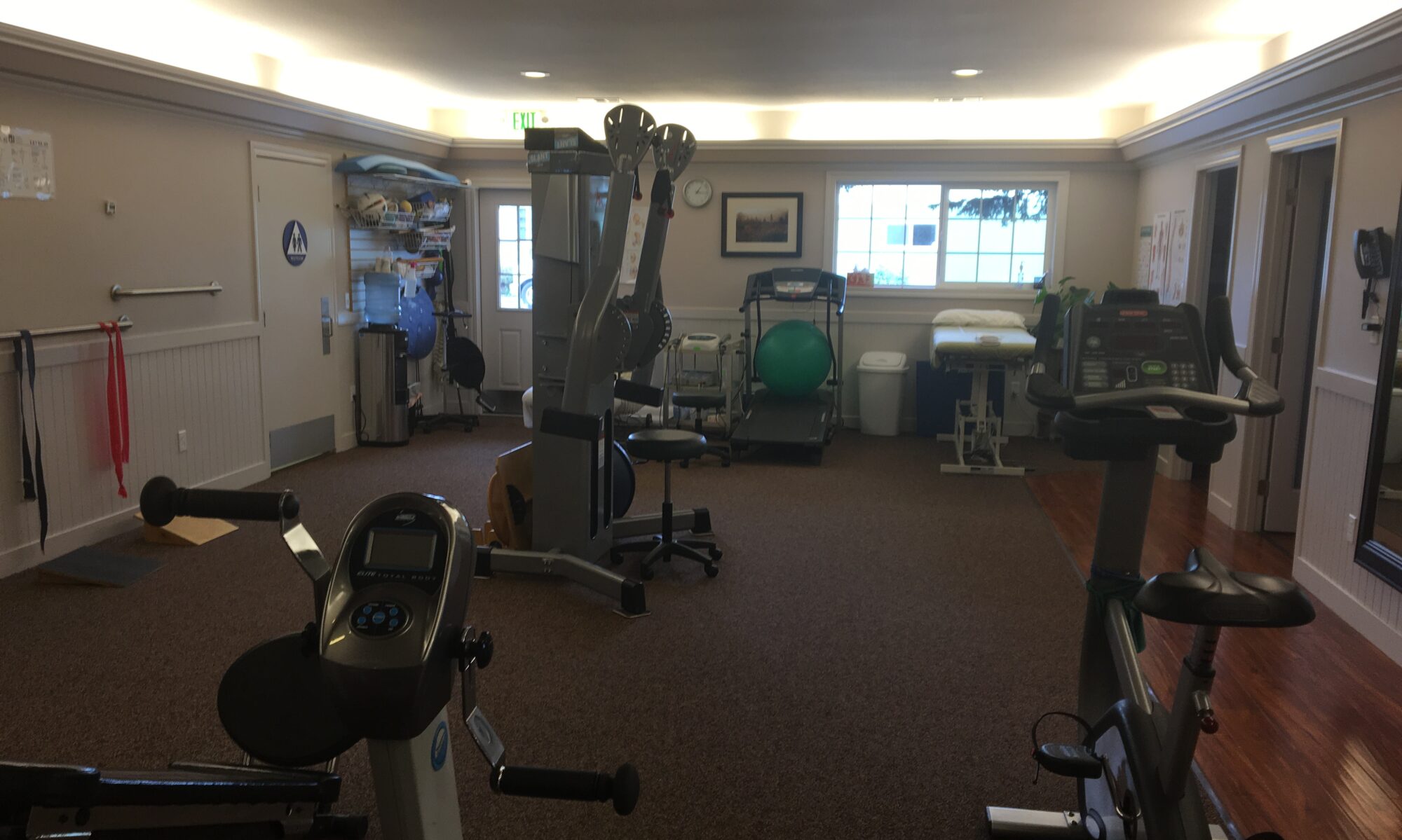The management of Patellofemoral Pain Syndrome(PPS) is difficult, primarily because of the lack of consensus in the medical community regarding the cause and treatment. Most often athletes who participate in sports where jumping and squatting is prevalent (basketball & volleyball) experience this painful knee condition, especially female athletes. However, a large population of the general public experience this pain as well (more prevalent in middle aged women.) People who suffer from PPS generally complain of pain in the front of the knee during such activities as stair climbing and sitting for long periods of time with their knee flexed greater than 90 degrees. Swelling can be present in the front or anterior aspect of the knee.
There are a few trains of thought associated with Patellofemoral Pain Syndrome. The original thought process focused on the problem originating at the knee. When the medial quadriceps muscle (Vastus Medialis Oblique-VMO) is weak and lateral quadriceps muscle and lateral structures are too tight, this causes the patella to track incorrectly (laterally) which wears down thinner cartilage on the back of the patella resulting in a painful bone-to-bone contact. The treatment for this is to tape the patella in correct alignment and strengthen the VMO pulling the patella back to track correctly within the thicker cartilage. This increases shock absorption and lubrication providing painfree knee function. This methodology is still widely used and has approximately 50% success rate in treating PPS.
NEW APPROACH
A newer thought process has surfaced recently whereby instead of looking at Where the pain is occurring, it looks at Why the problem is occurring. This approach focuses on the problem originating at the hip rather than the knee. Therapists and trainers for years have realized that a larger Q angle from the hip to the knee will increase lateral patellar tracking causing the knee to be more susceptible to PPS. This is a structural human “flaw” found more frequently in women when experiencing knee pain than men (women tend to have slightly wider hips than men). This newer thought process focuses more on weak hamstring muscles allowing the hip to rotate forward too much. This forces the femur to the inside, displacing the knee cap to the outside, causing chondromalacia patella (deterioration of the articular cartilage on the back of the patella). A common special test used is Clarke’s Sign.
To continue our focus on the hip, if we look at the function of the gluteus maximus muscle (hip extension and external rotation), we can also see that a weak gluteus maximus will allow internal rotation of the femur which gives the hip an adduction and knee genu valgum (knock knee) posture. These both will increase lateral tracking of the knee cap, leading to deterioration of the cartilage on the back of the patella (Chondromalacia).
The last anatomical structure possibly involved with Patellofemoral Pain Syndrome is the foot. If a patient has a pes planus foot posture (flat foot), this would also cause increased genu valgum at the knee, again equating to an increase in lateral tracking of the Patella.
Patellofemoral Pain Syndrome
In summary, evaluation of Patellofemoral Pain Syndrome must take several etiologies into consideration when attempting to identify the root of PPS pain:
- Weak VMO (vastus medialis oblique) muscle
- Weak Hamstrings
- Weak Gluteus Maximus
- Pes Planus (pronating foot posture)
- Large Q angle from hip
- Overly tight lateral knee structures
Now, let’s look at the treatment. Treatment for PPS should encompass all potential etiologies. First, strengthening the VMO which attaches to the medial border of the knee cap and helps to medially glide and hold the patella in correct tracking pattern. Second, the treatment program should address strengthening the hamstrings and gluteus maximus to avoid increasing the Q angle from the hip. The feet then should be properly evaluated for pes planus or pronated posture and corrected with orthotics. Taping techniques, such as patellofemoral taping, can be used to properly align the patella while strengthening, avoiding increased inflammation and pain in the knee. The use of therapeutic modalities such as ultrasound, electrical stimulation and icing will help stimulate the healing process as well as control symptoms. Last, a stretching program will be incorporated to such structures as the hip, quads, hamstring and calf muscles to reduce muscle tightness and promote balance.
Click Here to Download Full PDF NEWSLETTER PFSFinal
